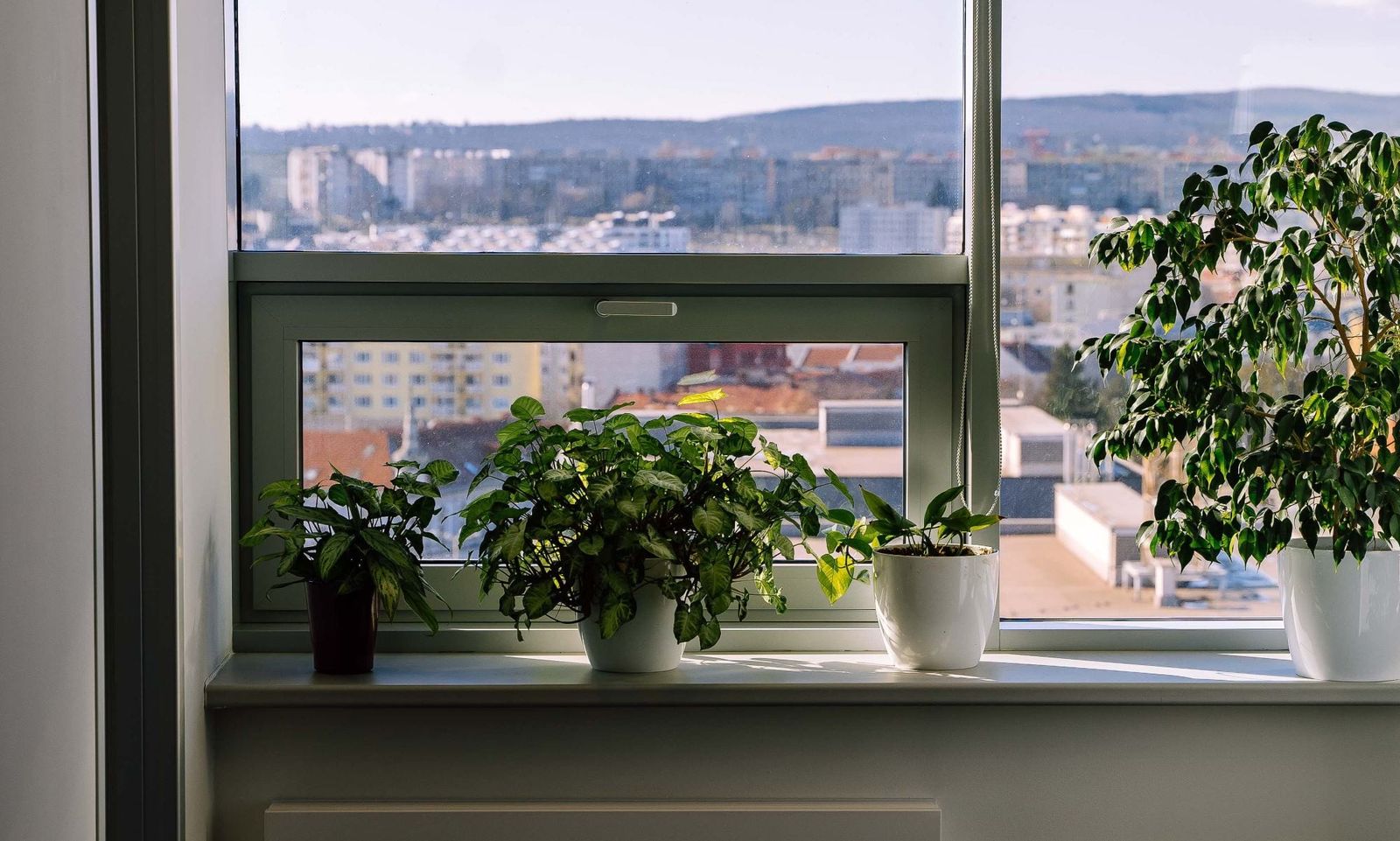Indoor plants are all the craze right now. To be fair, they have actually been on a winning streak for the last couple of years.
From pop-up indoor warehouse sales filled with hundreds of plants and people, to numerous boutique stores boasting the most exotic plants in town, is it an addiction or a phase? Or, are we finally realising how dull the world can be without a touch of nature?
If it’s any consolation, I know first-hand just how absurd the indoor plant obsession can be. My partner has about 50 indoor plants in our home — not that I’m complaining — since I reap all the benefits, without lifting a finger.
Not only do I breathe easier at night, the indoor air quality is always fresh, clean and pleasant. You see, there is far more to indoor plants than meets the eye. However aesthetically pleasing they may be, they actually provide a wealth of benefits for your home.
For instance, did you know there are indoor plants that can help reduce humidity? They also act as a natural air purifier. I guess that would explain why the air always smells fresh in our home. Now, look if you’re worried that you might end up killing the poor things, don’t be. There are some seriously hardy indoor plants out there, which we will list later on.
Anyway, enough about me, let’s get to the exciting part you’ve all come here to read about. Here are the best indoor plants (other than the common peace lily) for your home and how they help resolve common household issues you weren’t even aware of.
3 Indoor plants that reduce humidity
Not every home is set with ducted and split system air conditioning units that offer a dry-mode feature to cope with the humidity levels. Instead, one might want to look at some specific indoor plants that can help with this issue.
Calathea
Originating from tropical regions around the world, calatheas absorb moisture through the air using its large, wide leaves. Vibrant in colour (such as purple) with unique patterned leaves, the calathea is a beautiful addition at home or at the office. They respond very well to humidity, require little water (if there’s standing water, it’s overwatered) and can tolerate indirect sunlight. Calatheas are pet-friendly and are non-toxic to dogs and cats.
Pothos (devil’s ivy)
There’s no reason why you can’t get yourself a pothos. This hardy, easy-to-care for plant can survive just about anywhere in your home. It doesn’t mind low-light areas and prefers to have its soil dry out between each watering; this means irregular watering schedules are all good. They respond very well to humidity and as a vine, they are the perfect choice to hang off your shower curtain rod in the bathroom, or on the windowsill in the toilet. Pothos (also known as devil’s ivy) are highly toxic to cats and dogs.
Bird’s nest fern
If you’re interested in getting a fern, we highly recommend the bird’s nest fern. It doesn’t mind low light levels and absolutely loves the extra moisture in humid rooms. In perfect conditions, the bird’s nest fern becomes a big friendly giant with beautiful dark leaves that can improve the appearance of any dull room. Beware, what we meant by big friendly giant is that this plant tends to grow big (1-2 metres to be exact) very quickly. Bird’s nest ferns are pet-friendly and are non-toxic to cats and dogs.
4 Indoor plants that purify the air and remove harmful toxins
Boston fern
If you’re looking to kill 2 birds with 1 stone, the Boston fern is super effective at not only absorbing excess moisture from the air, it’s also excellent for purifying the air in your home. It does both so naturally, without a struggle, making a room noticeably comfortable. However, you’ll need to pay extra attention to your fern by regularly misting it, especially during the colder months as they do not fend well against dry air. Boston ferns are pet-friendly and are non-toxic to dogs and cats.
Areca palms
Areca palms are a fine choice for large areas in your home such as the living room or kitchen area, for all your open living space homeowners. When it comes to eliminating harmful toxins in your home, the areca palm is unmatched. It has been mentioned as one of the best plants for removing toxins including benzene, carbon monoxide, formaldehyde, trichloroethylene and xylene. It is indeed pet-friendly and is non-toxic to cats and dogs. They’re relatively low maintenance, however require regular watering and prefer lots of sunlight, so place them near a window.
Mother in-laws tongue (snake plant)
If it’s any consolation, the mother-in-law tongue was included in a NASA study to find the best air purifying plants for your home. The study revealed that snake plants provided a natural way of removing toxic agents including benzene, formaldehyde, and trichloroethylene, as well as harmful pollutants form the air. This plant is able to withstand high humidity levels, prefers low-light and does not require much watering. Mother in-laws' tongues are highly toxic to dogs and cats.
English ivy
This cute little plant enjoys friendly company crowded in a small pot. They are perfect in hanging baskets, on windowsills, bookshelves and pretty much anywhere it can dangle it’s little vines. They prefer indirect sunlight and require little watering. Make sure there is excellent drainage as the ivy dislikes standing water and overly wet soil. English ivy helps remove formaldehyde and benzene from the air. English ivy is moderately toxic to dogs and cats.
4 Indoor plants that refresh dry indoor air and increase humidity
Are you sick and tired of waking up in the middle of the night with a dry throat? Are your sinuses dry and irritated all the time? You may be suffering from a case of dry air in your home. Luckily, there are plenty of wonderful indoor plants that can help increase humidity levels to help you breathe easier.
Spider plants
If you're arachnophobe you’ve got nothing to worry about, there’s no spiders here. Spider plants are a fairly common household plant that can be found at your local Bunnings and just about any nursery you go to. They prefer indirect sunlight, but grow best in bright areas, so try keep them near a window. The soil must be kept moist but not soggy, if there’s standing water you’ve gone too far. Not only do spider plants help increase indoor humidity, they are also an excellent air purifier, removing harmful toxins like formaldehyde and xylene. Spider plants are pet-friendly and are non-toxic to cats and dogs.
Jade plants
The jade plant has been proven in studies to help increase the relative humidity of a room in a process called evapotranspiration. What makes the jade plant a good addition to your home is that most of this process happens in the dark, which makes it perfect for the winter months when days are short and nights are longer. Of course, the air is much drier during winter as we look to crank out reverse cycle air conditioning. Keep the jade plant in a bright spot, water deeply in spring and summer, and only water once the soil is dry. Use a soil moisture meter for easier watering.
Rubber plants
The rubber plant is a hardy indoor plant when compared to its tropical counterparts, making it an easy-to-care for indoor plant. They have a really high transpiration rate, which means you’ll have cleaner, fresher air in your home all day long. Rubber plants can tend to grow quite large, so you’ll need to be prepared to prune or move it when the time comes. They enjoy partial sun to partial shade and drier soil, so you don’t have to worry about watering it so much. Rubber plants also help to purify the air, removing toxins xylene, benzene, formaldehyde and trichloroethylene.
Dwarf date palm
Also known as pygmy date palms. These cute little babies are miniature versions of the palm trees you typically see at a resort or on a postcard. They help keep the air in your house clean, removing formaldehyde and xylene from the air and increasing relative humidity. This indoor plant is relatively easy to grow, requiring partial shade and moist soil, but dislikes the cold so keep them away from a drafty window.
Find more plants to re-humidify your dry indoor air.
The bottom line
Let’s face it, indoor plants rock. From combating dry air to purifying the air, if you have space in your home for a few little houseplants, we highly recommend considering some of the plants listed above. Consider grouping plants of the same category together for a more noticeable effect.







